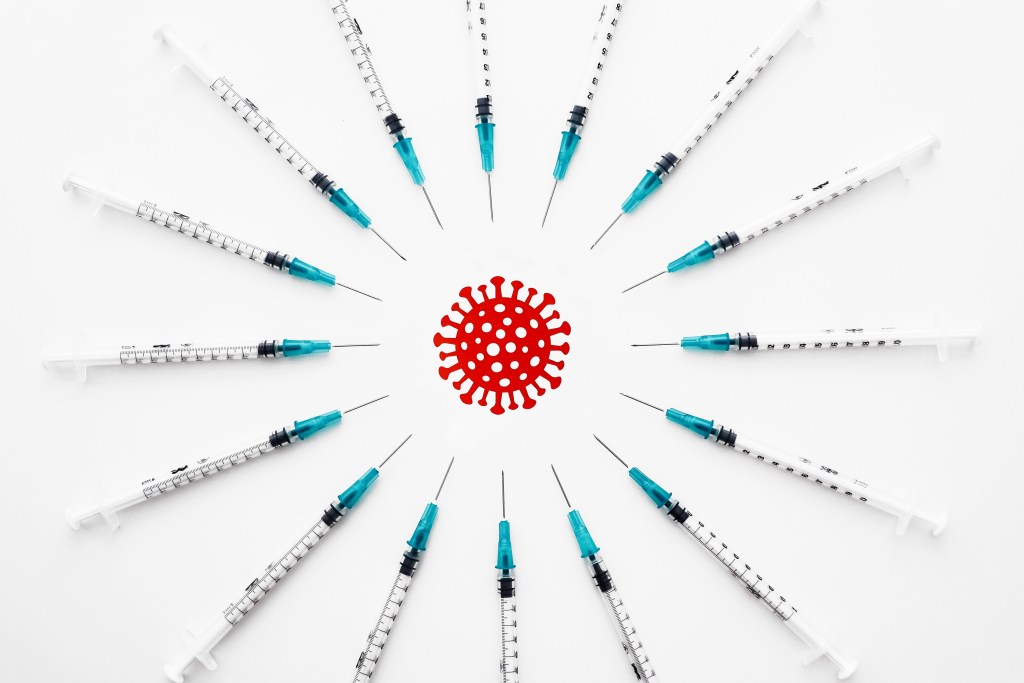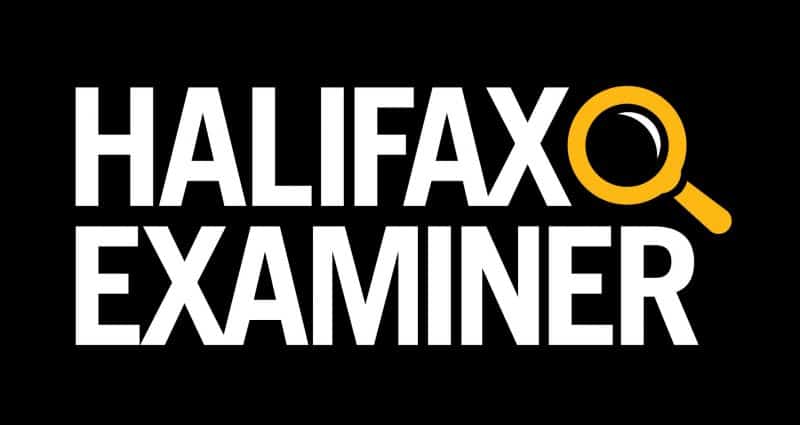In the month since the Omicron variant was confirmed in Nova Scotia, we’ve gone from 20 cases in a day to over 1,000. Time to take a moment to think about those trying to make sense of it all and make the best decisions for all of us.
On Wednesday, November 24, 2021 — just 45 days ago, as I write this — Nova Scotia reported 20 new cases of COVID-19. Officials coupled that modestly unhappy news with a report that 31 others had recovered, meaning the total number of active cases in the province had been reduced to just 172. We seemed to be tracking in the right direction. Even Tim Bousquet, the Examiner’s relentless COVID chronicler — whose coverage of the pandemic has been an intelligent information lifeline for many of us throughout — began to muse about whether he really needed to keep doing his exhaustive and exhausting daily updates.
With nearly 790,000 Nova Scotians double-vaccinated and more than 13,000 having already received a third booster shot, it finally seemed possible to imagine the worst might be behind us.
But November 24, it turns out, was also the day South African authorities contacted the World Health Organization to provide “evidence indicative of a detrimental change in COVID-19 epidemiology.” Two days later, the WHO designated this “detrimental change” — B.1.1.529 — a variant of concern and named it Omicron.
After that, everything we thought we knew about where COVID was headed… we didn’t.
On December 3, just over a week later — oblivious to what was coming and heedless of the already clear and present dangers of gathering unmasked in large numbers in small places— more than 2,000 people from all over North America and perhaps beyond converged on tiny Antigonish, NS, for St. Francis Xavier University’s annual X-ring ceremony, a celebratory eating-drinking-partying weekend rite of passage for senior students and their families.
Just seven days later, Nova Scotia health officials had linked 114 new cases of COVID-19 to the St. FX event. The following Monday, December 13, Canada’s National Microbiology Laboratory confirmed the presence of the Omicron variant in 40 lab tests from Nova Scotia. Most of those cases could be linked directly to the St. FX super-spreader.
(We know now — thanks to researchers at Dalhousie University who had detected unusual but then-unidentifiable viral signals in local wastewater in November— that Omicron was probably already in the province for close to a month before any of us knew it.)
Wherever it originated and whatever its cause, the December 13 confirmation of Omicron’s presence here marked the beginning of the end of our unfounded optimism for the immediate future.
It is hard to believe that was less than one month ago.
On Friday (January 7), Nova Scotia reported 678 new cases of Omicron — nearly 35 times as many as on November 24.
That’s actually less than official daily counts of more than 1,000 at the beginning of the new year (or the 1,145 who tested positive on Saturday, according to an abbreviated weekend report from the provincial department of health and wellness).
But none of those numbers, almost certainly, comes close to indicating the real numbers because the latest surge has so overwhelmed the system officials have had to pare back on testing to the most symptomatic and virtually eliminate contact tracing.
According to the Examiner’s Bousquet:
There is a total of 144 people in hospital [Friday] in Nova Scotia with COVID. Of those:
• 48 were admitted because of COVID
• 32 were admitted to hospital for other reasons, but tested positive for COVID through the admissions process
• 64 contracted COVID in the eight hospital outbreaks
Added the Examiner’s Jennifer Henderson:
The latest wave of COVID is putting pressure on every aspect of the health care system, including the postponement of surgeries due to lack of beds and longer than usual waits for patients arriving at overcrowded Emergency Departments… 739 employees of Nova Scotia Health are out sick or isolating… Hospitals are at “near capacity” today with ICUs and most hospital floors operating at approximately 97%… “compared to December of 2020, we had an additional 2,100 [emergency room] visits across the province…”
I recite all this to remind myself — and you — just how much has changed in so little time. And how difficult that is for us, but also for those whose job it is to make decisions about how we deal with this latest twist of the pandemic.
It’s easy to become frustrated by what sometimes seem like dizzying, logic-defying, ever-changing rules and policies. Schools open, schools closed. Gathering limits reduced. Testing requirements changed. Days in isolation modified.
But it’s also worth taking a moment to consider all those fat firehouses spewing the latest data, new research, old research reconsidered, previously accepted probabilities suddenly recalibrated… all of it washing over and through the scientists and politicians we expect to not only make sense of it all but also to steer us safely toward safety among the rocks of economic calamity and death.
I wouldn’t want to be them.
Consider just one of the many complicated, inter-c0nnected conundrums they face.
Schooling.
“The best place for our children is in school.” Who among us could disagree? It’s been repeated on a never-ending loop by all our political leaders since the beginning of the pandemic, most recently by Premier Tim Houston on January 5.
By then, however, it was less a mantra than an apology for having had to push back in-person learning yet again.
If you want to know how Omicron has played havoc with schooling, remember this. Until December 15, students were supposed to enjoy a standard-issue pre-pandemic variety Christmas holiday break. But on that day — just two days after Omicron had been confirmed — the government half-pivoted, announcing this year’s school break would begin two days early, leaving parents to scramble for childcare. They were hoping, it seemed, that that would be enough. It wasn’t. So, in the middle of the holiday, the province — faced with exponentially exploding case counts — extended the Christmas break again by almost another week to January 10.
As of mid-last week, students were scheduled to begin their winter term online, with plans/hopes/dreams they could return to the classroom on January 17.
No one, including the people who make the decisions, can be fully confident that will happen.
Think of all the complicating, sometimes contradictory factors they’re juggling:
- The data suggests Omicron is way more transmissible than earlier variants.
- The data suggests infections are less severe. But no one knows, of course, what the long-term health implications of “less severe” may be.
- The data suggests that, even despite the less severe infections, the sheer number of people getting infected will still mean more people will be hospitalized, and people will certainly die. They already have.
- The data suggests children are less at risk of severe illness. But there are also reports of an uptick in hospital admissions among children and teens, with suggestions respiratory infections linked to Omicron may actually hit children harder.
- Even if children are less likely to get COVID or suffer as much themselves, they can still transmit it… to their teachers, home to their parents and grandparents, friends and neighbours, who will transmit it to their… and so on, and so on.
- The best protections for those in schools are probably — today’s view — three-ply or surgical masks and good ventilation. That’s part of the reason the government delayed the return to the classroom. But will officials be able to source enough suitable masks for all students and staff, and will the province’s promise to install HEPA filtration systems in the 71 schools with only passive ventilation be completed in time? (Why wasn’t that done a lot sooner? Another question for another government.)
- If teachers or other caregivers do contract COVID — or are in contact with someone who contracts it — they end up off work and/or in isolation, putting an additional strain on school staffing. Lack of staff was probably the reason school had to be cancelled earlier than planned in December.
- If schools are forced to close because there aren’t enough staff members to operate, parents will have to stay home to care for kids, or juggle their work-at-home responsibilities with childcare… creating more complications.
- Parents who can’t work during isolation will disrupt their own workplaces — especially if fellow employees have COVID or also have to isolate because of contacts, which is already crippling the economy for everyone.
- One possible solution may be to reconsider how long someone needs to isolate after being exposed to COVD. The US Center for Disease Control, in fact, has reduced its isolation guidelines from 10 to five days because of “growing evidence that people with the coronavirus are most infectious in the two days before and three days after symptoms develop.” Nova Scotia has opted to reduce its isolation period to a shorter but more cautious seven days. But Ottawa’s Coronavirus Disease Symptoms and Treatment page still says, “Symptoms may take up to 14 days to appear after exposure to COVID-19,” and — worse — “You may be infected but not have symptoms… you can still spread the virus to others.” What’s safe? Safest in the circumstance?
Every decision involves a balancing act that never definitively balances. The people making decisions will inevitably make some wrong ones. When they do, we — as my colleague Tim has said — need to call them out. But even as we do that, we need to remember just how difficult their jobs really are, and how hard they’re working to get it right.
***
A version of this column originally appeared in the Halifax Examiner.
To read the latest column, please subscribe.








 STEPHEN KIMBER, a Professor of Journalism at the University of King's College in Halifax and co-founder of its MFA in Creative Nonfiction Program, is an award-winning writer, editor and broadcaster. He is the author of two novels and eight non-fiction books. Buy his books
STEPHEN KIMBER, a Professor of Journalism at the University of King's College in Halifax and co-founder of its MFA in Creative Nonfiction Program, is an award-winning writer, editor and broadcaster. He is the author of two novels and eight non-fiction books. Buy his books
Thanks for this, Stephen. It’s so hard to keep track of things these days when data is not appreciated, wanted, etc. (Check the story at https://vancouversun.com/health/mixed-messages-on-care-home-testing-frustrate-facility-operators.) It’s another version of “Don’t ask, don’t tell.”
Two niggly points about “The best protections for those in schools are probably — today’s view — three-ply or surgical masks and good ventilation.” Not quite right.
The best thing to put over our mouths and noses are N95s or better. See the graphic at https://www.ohcow.on.ca/covid-19/ (“Mask efficiency”) about what’s needed. It sums up the science.
When it comes to ventilation, we need to clean the air (filter it) and clear it (replace it with fresh air). Those HEPA filtering units only help with filtering, and need to be sized to the room (and take into account if they’re run at low or top speed most of the time). Fresh air should come from building systems or other sources, so that the CO2 levels are less than 600. See the marvellous classroom ventilation calcultator at https://www.ohcow.on.ca/posts/classroom-ventilation-calculation-tool/. It can be used elsewhere, and the results should be posted outside each room where it’s used.